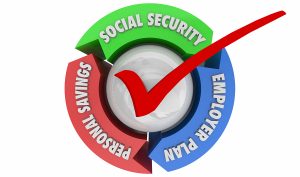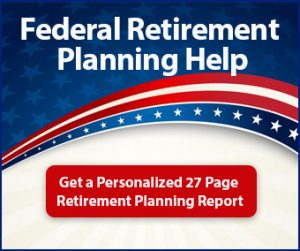Posted on Friday, 18th September 2020 by Dennis Damp
 Print This Post
Print This Post
I receive many questions this time of year about the retirement process and required forms. It can take several months for HR to process your papers and send them to the Office of Personnel Management (OPM) for final determination of your claim.

Many federal and postal workers elect to retire at end of year because employees can sell back their use or lose annual leave plus current year accumulation. This can amount to a lump sum check of up to 20 percent of their annual gross wages. I sold back 440 hours of annul leave when I retired many years ago. The lump sum is generally paid out 6 to 8 weeks after retiring and therefor taxes are deferred to the following year. Plus, your income is generally less after retirement and you pay less taxes on the lump sum payout.
I submitted my retirement application forms three months before retirement. OPM suggests submitting them at least 2 months before your target retirement date. The more time HR has to process your application the better.
Last year I wrote an article titled, The Ultimate Retirement Planning Guide that outlines the steps federal and postal employees must take to effect their retirement. I updated the article this week. The process can be confusing and there is much to consider; from selecting the best date to retire to the many benefit elections available. Each of the required forms come with instructions, however they can be and are often confusing. Our guide links you to clarifications and detailed explanations for each election along with other recommendations that will help you make informed decisions.
The following basic package of retirement forms are required for both the Federal Employees Retirement System (FERS) and the Civil Service Retirement System (CSRS). After meeting with your HR retirement counselor and reviewing your Official Personnel File (OPF), other forms may be necessary for areas such as military credits.
FERS Forms
- SF-3107 (Application for Immediate Retirement)
- SF-3107-2 (Spouse’s Consent to Survivor Election) This form is only required if you do not elect the full survivor benefit for your current spouse. Included with the SF-3107 form.
- SF-2818 (Continuation of Life Insurance Coverage)
- SF-2817 (Life Insurance Election) Use this form is you do not wish to continue all of your optional life insurance into retirement. The SF-2818 cannot be used to cancel life insurance.
- TSP – Forms needed for your election of TSP disbursements.
CSRS Forms
- SF-2801 (Application for Immediate Retirement)
- SF-2801-2 (Spouse’s Consent to Survivor Election) This form is only required if you do not elect the full survivor benefit for your current spouse. Included with the SF-2801 form.
- SF-2818 (Continuation of Life Insurance Coverage)
- TSP – Forms needed for your election of TSP disbursements.
- RI 38-124 (Voluntary Contributions Election) Only required if you want a refund of your voluntary contributions.
If you are considering retirement at end of year, this is a good time to start your retirement application and talk with HR. You can request detailed retirement benefit estimates for several target retirement dates plus they can help you through the process. Use our Ultimate Retirement Planning Guide for clarifications and to ensure you aren’t missing anything.
Helpful Retirement Planning Tools
- Retirement Planning For Federal Employees & Annuitant
- Budget Work Sheet
- A Marriage of Convenience – Medicare & FEHB
- Medicare and FEHB Options – What Will You Do When You Turn 65? (Part 1)
- What to Consider Before Enrolling in Medicare B (Part 2)
- Should You Change to a Lower Cost FEHB Plan When You Sign Up For Medicare (Part 3)
- Caution – Don’t Lose Your FEHB Coverage
- Social Security Guide
Disclaimer: Opinions expressed herein by the author are not an investment or benefit recommendation and are not meant to be relied upon in investment or benefit decisions. The author is not acting in an investment, tax, legal, benefit, or any other advisory capacity. This is not an investment or benefit research report. The author’s opinions expressed herein address only select aspects of various federal benefits and potential investment in securities of the TSP and companies mentioned and cannot be a substitute for comprehensive investment analysis. Any analysis presented herein is illustrative in nature, limited in scope, based on an incomplete set of information, and has limitations to its accuracy. The information upon which this material is based was obtained from sources believed to be reliable, but has not been independently verified. Therefore, the author cannot guarantee its accuracy. Any opinions or estimates constitute the author’s best judgment as of the date of publication, and are subject to change without notice. The author explicitly disclaims any liability that may arise from the use of this material.
Last 5 posts by Dennis Damp
- Apply for Retirement on OPM’s Online Application Service - June 27th, 2025
- New Retirement Application Portal Launched - June 20th, 2025
- 2026 COLA Estimates & Retirement Processing Update - June 12th, 2025
- Electronic Official Personnel Folder Platform Launched - June 5th, 2025
- Electronic Retirement Application Submissions - May 30th, 2025
- Powerless, Keeping the Lights On - May 22nd, 2025
- Request Your 2025 Retirement Benefits Booklet from OPM - May 16th, 2025
- Projected Annuity Calculator Updates for FERS and CSRS - May 9th, 2025
- Hiring Freeze, Schedule F, and Social Security Benefits - April 25th, 2025
- Potential Benefit Cuts - It's Not Time to Panic - April 17th, 2025
- UPDATE - Deferred Resignations and VERAs Return - April 11th, 2025
- Retirement Investments - Down but Not Out - April 4th, 2025
Posted in ANNUITIES / ELIGIBILITY, BENEFITS / INSURANCE, ESTATE PLANNING, FINANCE / TIP, RETIREMENT CONCERNS, SURVIVOR INFORMATION | Comments (2)
 Print This Post
Print This Post


September 24th, 2020 at 3:44 pm
Does the SF 2801 need to be notarized if the retirement applicant has never been married? If so, how does the applicant prove a negative?
September 27th, 2020 at 8:44 am
Nancy, if you aren’t married you would check “NO” on line 1 of the SF 2801 Section E form. Then go to line 2 in Section F and check “NO”. You would not need to complete the Spousal Certification and therefore you would not require a Notary. Your employing office will certify your Federal Service in the section that follows the Spouse’s Consent section and send it back to your for your review and signature. You must certify that the service noted on the form is correct in part 3 of the Summary of Federal Service section. You do not need a notary, just your signatures.